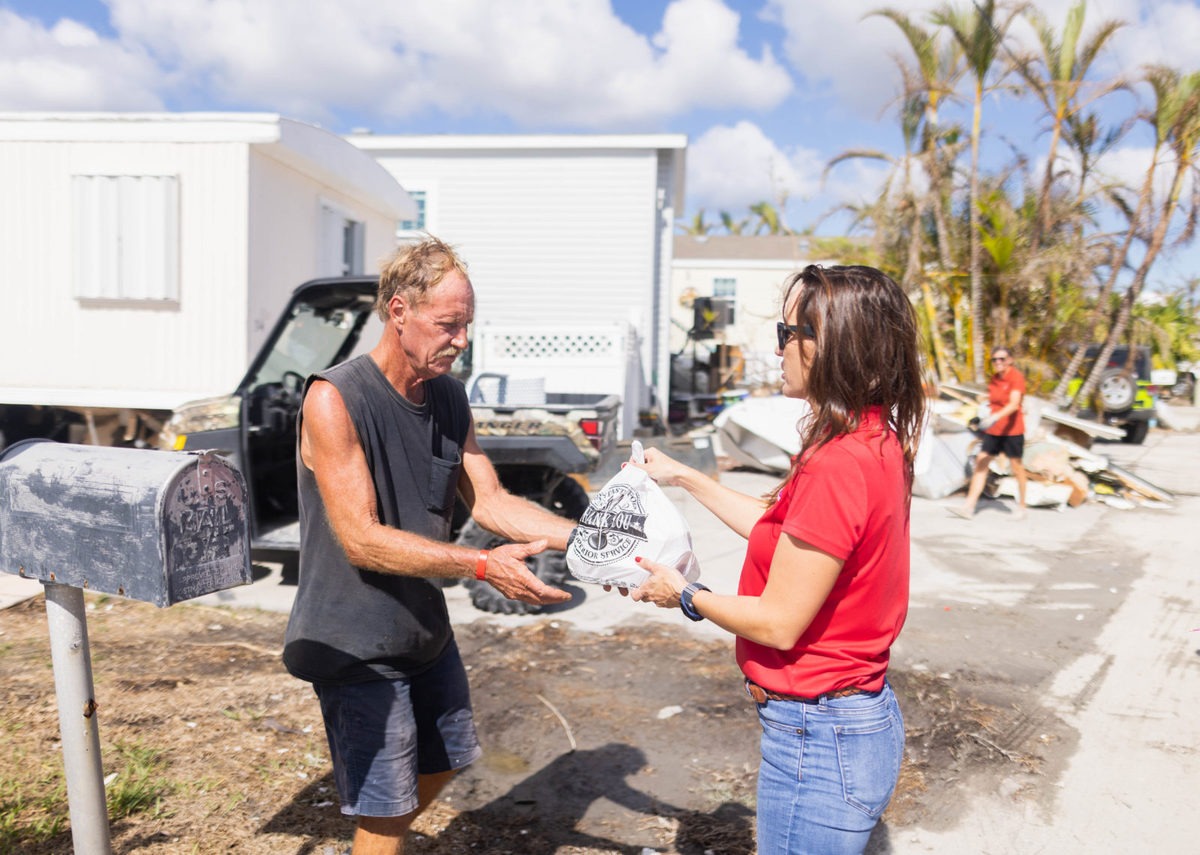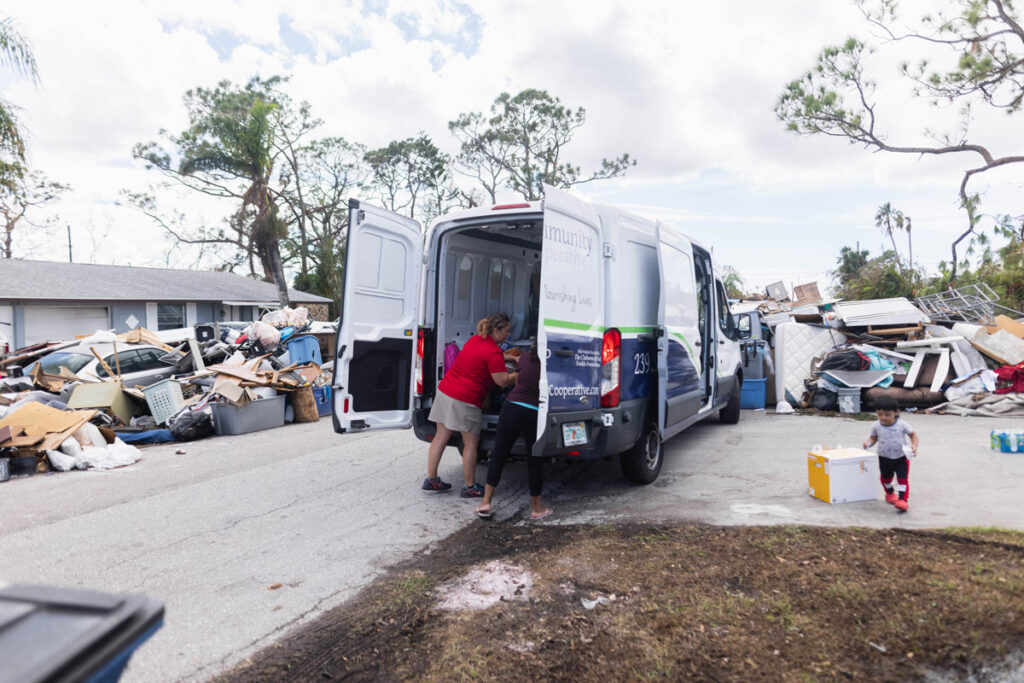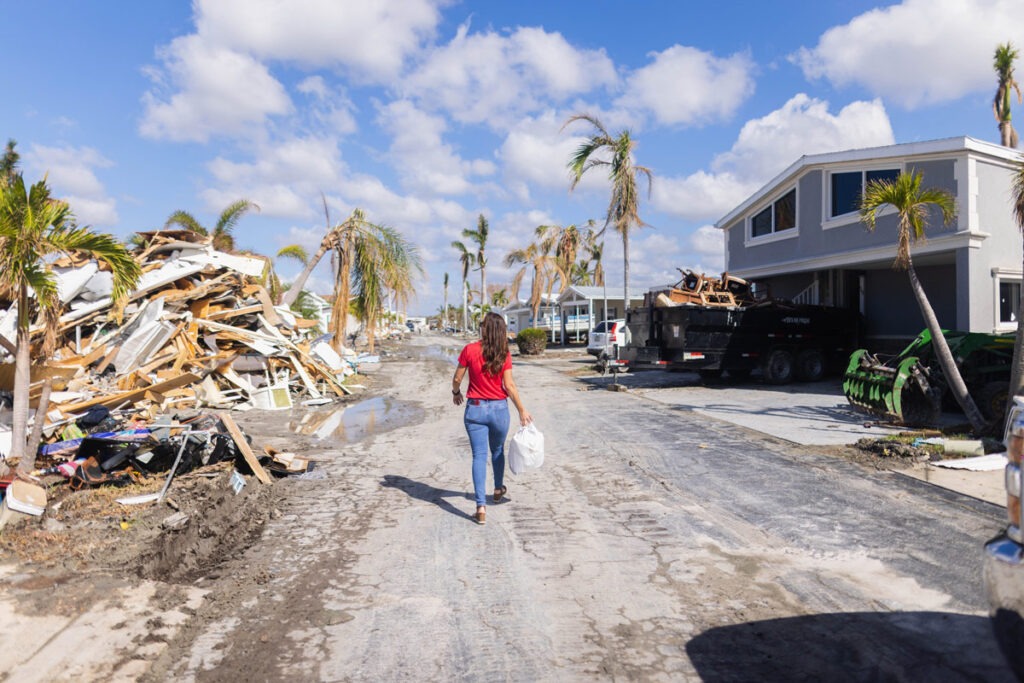
This article originally appeared in Nexus Media News.
When an unprecedented heat wave bore down on Portland, Oregon, in June 2021, Jonna Papaefthimiou, the city’s chief resilience officer, immediately thought of the city’s most vulnerable populations: older people sweltering, often alone, in their homes.
She called Suzanne Washington, who runs the local chapter of Meals on Wheels. “That overlap of their demographic and the demographic that faces great risk from heat is almost identical,” Papaefthimiou said.
Over the next couple of days, Washington and a group of staff identified their most vulnerable clients, recruited volunteers and started making calls. “We were asking, ‘Do you have a fan? Do you know this heat is coming? Are you prepared? Could you get to a cooling center? Do you know where [the nearest one] is?” Washington said.
Meals on Wheels, which originated in the United Kingdom during the Second World War, is not a climate organization — or even an emergency-response organization in the traditional sense. Rather, these programs are best known for delivering hot meals to lower-income seniorsShe and her team collected donated fans and air conditioners, which drivers brought with them on their food-delivery routes. They conducted wellness checks by phone and helped clients find rides to cooling centers.
Washington remembers calling a woman in her eighties who said she had just fainted, had a headache and didn’t feel well. “We sent out help,” she said. “That person was in the heat exhaustion phase and heading towards the next phase”— heatstroke, a life-threatening condition. Their quick actions and persistent outreach most certainly saved lives.
Meals on Wheels, which originated in the United Kingdom during the Second World War, is not a climate organization — or even an emergency-response organization in the traditional sense. Rather, these programs are best known for delivering hot meals to lower-income seniors.
But in recent years, as climate disasters increase in frequency and intensity, the broader mission — to “improve the health and quality of life” of the seniors these programs serve — has taken on new urgency.
These programs, which often have long waitlists, have been shown to improve older Americans’ diets and nutritional intake, but their benefits go beyond food security.
Climate-related disasters, like extreme heat, hurricanes and wildfires, do not affect all populations equally. If you’re Black, or poor, you’re more likely to live in an urban heat island that can get dangerously hot during a heatwave. You’re also more likely to live in a low-lying area prone to hurricane damage and flooding.
People who are older, who have limited mobility and who are isolated are among the most vulnerable during climate emergencies. In Multnomah County, which encompasses Portland, 56 of the 69 people whose deaths were attributed to the heat event were over 60 years old. Forty-eight of the dead had lived alone.
There are more than 5,000 Meals on Wheels programs across the country serving more than 2.4 million people, according to Meals on Wheels America, the leadership organization that supports local branches. These programs, which often have long waitlists, have been shown to improve older Americans’ diets and nutritional intake, but their benefits go beyond food security.
Heat kills about 12,000 Americans each year, and around 80% of those deaths are in adults over 60. When Hurricane Ian killed 148 people last year, most of those who died were over 60. When the Camp Fire engulfed the California town of Paradise, killing 85, the average age of the dead was 72 years, according to a Cal Matters analysis.

“Anytime you’re dealing with a natural disaster or climate change-related event, you’re dealing with events that cause morbidity and mortality and ultimately lead to people succumbing to their chronic medical illnesses,” said David Dosa, a geriatrician and researcher at Brown University.
Older people are more likely to struggle with mobility, making it more difficult to evacuate an area that is flooding or in the path of a wildfire. They are also more likely to have health issues that require electrical devices, such as oxygen tanks or refrigerators for medicine, making power outages potentially deadly. And they are more likely to suffer from chronic conditions exacerbated by stress.
“When ‘Mrs. Smith’ dies in her apartment a week after a heat wave, she’s dying of COPD [Chronic obstructive pulmonary disease] or heart failure. She’s not necessarily ‘dying of the heatwave,’ even though chances are good that she was destabilized by the heat,” Dosa said. “The real body count ends up being much higher” than the official count, he added.
Residents of assisted living facilities don’t necessarily fare better during emergencies. According to a Senate report released in February, extreme weather events in 17 states have forced evacuations or led to injuries and deaths in long-term care facilities. In Florida, nine residents of a single nursing home died of heat exposure in 2017 after Hurricane Irma knocked out the facility’s air conditioning.
Sign up for our free newsletters
Subscribe to NPQ's newsletters to have our top stories delivered directly to your inbox.
By signing up, you agree to our privacy policy and terms of use, and to receive messages from NPQ and our partners.
What does keep people safe is contact with others and contingency plans — such as having a list of emergency contacts on the refrigerator and enough food, water and medication on hand to last several days, said Dosa.
As Hurricane Ian approached South Florida last year, Stefanie Ink-Edwards, CEO of Community Cooperative and head of Fort Myers’ Meals on Wheels, raced to distribute hundreds of hurricane kits with water, nonperishable food, flashlights and batteries. Staff and volunteers offered rides to shelters and made sure clients had those emergency numbers on the fridge.
Researchers have found that nonprofit meal-delivery programs can reduce loneliness, risk of falls and the need for institutional care
The storm hit Fort Myers on Wednesday, September 28. That night Ink-Edwards could barely sleep. “I was so worried about all of our homebound seniors, some of whom lived in really low-lying areas,” she said. “That’s the really scary part for us, not so much the preparation for the storm but: What’s it going to look like during the storm and then after? Are we going to be able to get to them?”
The next morning, Ink-Edwards inspected the organization’s kitchen and was relieved to discover it had sustained minimal damage. “By Friday, we were delivering meals and supplies again,” she said.
The roads were littered with debris, and clients had a litany of requests: bottled water, a generator for an oxygen tank, help to remove a branch that had crashed through a roof. “We do whatever we can,” she said. “We’ll end up finding a roofer, but in the interim, to put the bandaid on it, my volunteers and staff are the ones tarping roofs.”
Researchers have found that nonprofit meal-delivery programs can reduce loneliness, risk of falls and the need for institutional care. One economic analysis of the model found that a 1% increase in the number of people using the service was associated with a $109 million reduction in Medicaid spending.

“What sets these programs apart is the daily interaction — the informal wellness check-in and the socialization that recipients receive by nature of these meals showing up at lunchtime, every day, multiple days a week,” said Kali Thomas, a researcher at Brown University who has authored several studies on meal-delivery programs.
In New York, the Covid-19 pandemic exacerbated one of the most dangerous hazards of old age: isolation. “There are still so many who are afraid to go out, afraid to shop,” said Beth Shapiro, the executive director of Citymeals on Wheels. “The meal and the check-in coming to their door are really a lifeline.”
Jackie, a 73-year-old Queens resident and Citymeals client who asked that her last name be withheld, said she looked forward to her six-days-a-week deliveries. Two volunteers — Pablo and Veronica — take turns dropping meals off at her home. “It’s like having a niece and nephew visit every day,” she said.
Jackie, who struggles with shortness of breath, heart palpitations and poor vision, has lived alone since her mother died several years ago. “I hibernate when it’s hot out because of my breathing problems,” she said. During the summer, she relies on a single air conditioner in her living room and deliveries from her local pharmacy and deli to stay out of the heat. “I’m fortunate to have people like that because when you’re alone — no family, no siblings — you have to be independent,” she said.
She said that Citymeals has the phone number of one of her friends, who lives down the street. “If for some reason I don’t answer the phone, they’ll call her to make sure that she knew I was okay. If they can’t get ahold [of me or] her, they’ll call 911 to make sure that I’m not dead or unconscious on the floor,” she said. (Cities, including New York, have adopted similar buddy-system programs to keep vulnerable residents safe during heatwaves.)
During the first two years of the pandemic, Citymeals on Wheels more than doubled its annual deliveries and started substituting in-person visits with wellness calls. Volunteers have largely gone back to making in-person visits, but Shapiro said her organization is investing in expanding its check-in call program.
Citymeals is also training volunteers to identify signs of heat-related illness. “The people we’re feeding are living on extremely fixed incomes,” she said. “They’re making the decision to — if they have an air conditioner — to turn it on or not. So we have to be very aware of what’s going on and check in,” she said.
For Shapiro, the climate crisis hasn’t changed Citymeals’ mission so much as focused it. After Hurricane Sandy, the organization bought a 25,000 square-foot building in the Bronx to use as its operations hub. Shapiro never thought they’d use the entire building, “And then came COVID and we were filled to the gills,” she said.
She added, “So much of our planning is now around emergencies.”










